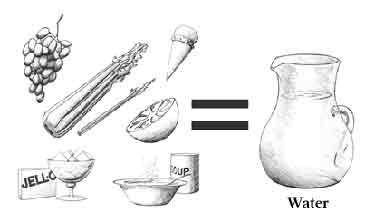CIDPUSA.ORG
Facts about Hemodialysis Diet CIDPUSA Foundation | ||
alternatives treatment of autoimmune disease read our e-book
Eat Right to Feel Right on Hemodialysis
Talk With a DietitianEven though you are on hemodialysis, your kidneys may still be able to remove some fluid. Or your kidneys may not remove any fluid at all. That is why every patient has a different daily allowance for fluid. Talk with your dietitian about how much fluid you can have each day. I can have _____ ounces of fluid each day. Plan 1 day of fluid servings: I can have _____ ounce(s) of ______________ with breakfast. I can have _____ ounce(s) of ______________ in the morning. I can have _____ ounce(s) of ______________ with lunch. I can have _____ ounce(s) of ______________ in the afternoon. I can have _____ ounce(s) of ______________ with supper. I can have _____ ounce(s) of ______________ in the evening. TOTAL _______ ounces (should equal the allowance written above)
[Top] What do I need to know about potassium?Potassium is a mineral found in many foods, especially milk, fruits, and vegetables. It affects how steadily your heart beats. Healthy kidneys keep the right amount of potassium in the blood to keep the heart beating at a steady pace. Potassium levels can rise between dialysis sessions and affect your heartbeat. Eating too much potassium can be very dangerous to your heart. It may even cause death.
To control potassium levels in your blood, avoid foods like avocados, bananas, kiwis, and dried fruit, which are very high in potassium. Also, eat smaller portions of other high-potassium foods. For example, eat half a pear instead of a whole pear. Eat only very small portions of oranges and melons. Dialyzing Potatoes and Other VegetablesYou can remove some of the potassium from potatoes and other vegetables by peeling them, then soaking them in a large amount of water for several hours. Drain and rinse the vegetables before cooking them. Your dietitian will give you more specific information about the potassium content of foods. |
| |
